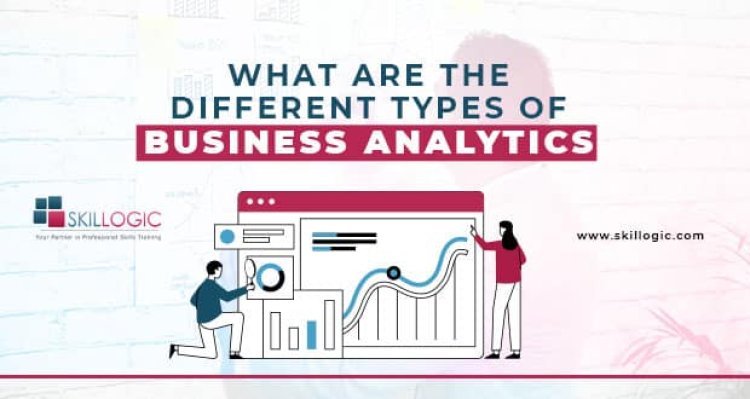What are the Different Types of Business Analytics?
Discover the different types of business analytics—descriptive, diagnostic, predictive, and prescriptive—and how they help organizations make data-driven decisions for growth and efficiency.

The realm of Business Analytics has seen a significant transformation in the past few years. In its primitive days, Business Analytics was a small concept, unlike the colossal form which it has assumed now. Today, business analytics is used in almost every industry. Be it, Retail, Healthcare, Travel and Tourism, Hospitality, Media and Entertainment and so on.
The data derived from various channels is the raw data, which needs to be analysed. This data in itself seldom possess anything that makes it great. Before analysis, it is just information. Business Analytics helps in converting the large quantum of data into actionable insights.
What are the types of Business Analytics?
Business Analytics is broadly classified into four different categories based on the stages of the problem. All four types are of great significance and cannot be compared to one another or ignored for one being less usable than the other.
Descriptive Analytics
Data is available in huge volumes, known as big data. The true potential of data can only be recognised by subjecting it to systematic analysis which further becomes instrumental in making decisions. Descriptive Analytics is known to be the simplest form of data analysis. It helps in summarising the findings from the datasets, which ensures clarity and serves the objective of analysis.
Data that is not analysed, known as raw data is of little use for communicating to the concerned parties such as business stakeholders. Descriptive Analytics is a methodical way of enhancing the readability and understandability of data.
For instance, an investor studies the economics of the stocks to know the health of the market. Is the time for investment right?. If not now, which part of the year can be considered best for investing in a particular stock. What are the present market trends?. Descriptive analytics is used to find the answer to all these questions.
Another instance of descriptive analysis is that of surveys. Using descriptive analytics, a person can find the average qualification of working professionals in a given area from the data collected.
Predictive Analytics
The objective of Business Analytics is to gain insights that will help in making better decisions. Predictive Analytics helps in knowing the future trends by taking into account the past data.
One of the real-world use of predictive analytics is in the real estate industry. It helps a property broker to analyse the future value of a given property. Applying predictive analytics to real estate data also helps to identify the owners who are willing to trade their property on an immediate basis.
Integrating predictive analytics into healthcare helps in creating comprehensive treatment models for patients based on the past health history and the patient’s degree of responsiveness.
Prescriptive Analytics
Predictive Analytics forms a base for this kind of analytics. It precisely helps in finding the solutions for the problem. Moreover, it also helps to know the type of solutions that helps to solve a particular problem.
Applying prescriptive analytics for sales and marketing activities, a company in the FMCG industry had successfully used prescriptive analytics to optimise trade promotion campaigns. These are generally done, by taking into consideration, the strategic goals and lifecycle of a product. The objectives of product promotion vary with the stages of the product lifecycle. For instance, the motive of promoting a new product is to gain larger market shares, while for an already existing product, the objective will be profit generation.
Diagnostic Analytics
Diagnostic Analytics helps to unearth the reason for a particular occurrence. It helps to know what exactly caused the problem in the past. It includes techniques such as Data Mining, Correlation etc. However, Diagnostic analytics does not provide any actionable insights.
Conclusion
Now having read about the four types of Business Analytics, it appears that all four of them together form a process of analysis. However, these can be used at different times to achieve different objectives.
SKILLOGIC Training Institute delivers expert-led certification courses in Six Sigma, PMP, Cybersecurity, and Business Analytics. With over ten years of experience, it offers practical, career-oriented training. With offline centers in key Indian cities, SKILLOGIC ensures accessible, high-quality education to boost skills and fast-track career advancement.

 Thushara C.P
Thushara C.P
0
5846